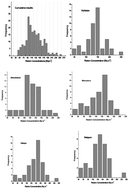Study of indoor radon concentrations and associated health risks in the five districts of Hazara division, Pakistan
Abstract
A total of 200 indoor air samples were collected to measure radon concentration levels and its contribution to the mean effective doses during different seasons of the period 2009–2010 at different sites of the five districts of Hazara division, Pakistan. The major portion of the region is mountainous and is full of thick forests which receives heavy snow fall in winter. The need for conducting the present survey relied on the fact that occupants spend their lives in poorly ventilated indoor environments of the region, especially in the winter season when they use wood fire inside their residences. The measurements of indoor air samples were taken with RAD-7, a solid state α-detector. Radon concentrations in the whole region range from 41 Bq m−3 to 254 Bq m−3 with a geometric mean of 128 Bq m−3. Radon progenies were measured with a surface barrier


 Please wait while we load your content...
Please wait while we load your content...